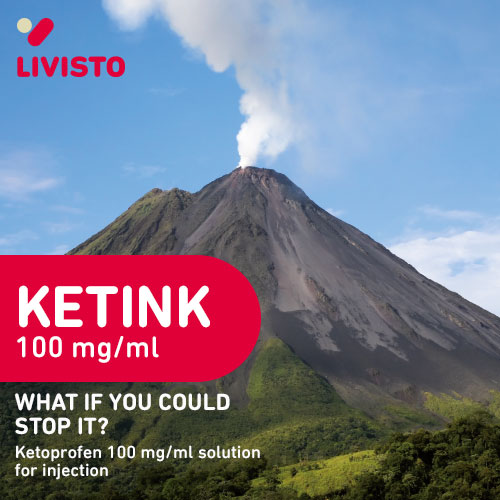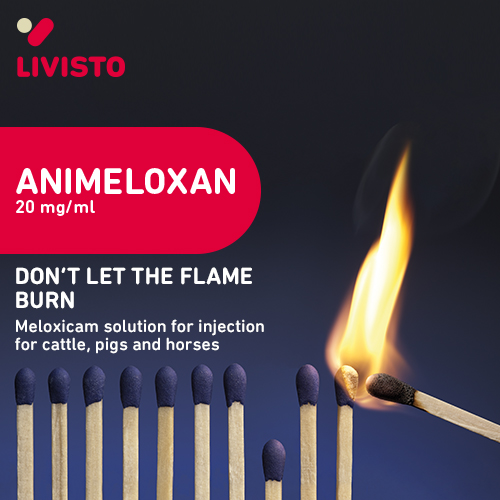Pain management in castration and tail docking of piglets
Tail docking is used in order to reduce the consequences of tail biting behavior but, nowadays, it is one of the biggest issues related to welfare in modern pig production due to its acute and midterm pain responses (Buijs and Muns, 2019).
On the other hand, surgical castration of piglets also causes acute pain, as evidenced by behavioral and physiological changes and, therefore, it is also recognized as a significant welfare concern (Baysinger et al., 2021).
Untreated pain in piglets could result in permanent changes in pain sensitivity and neuroanatomic or behavioral abnormalities, making pharmaceutical pain management even more critical for young animals undergoing a surgical procedure.
Detect pain in piglets with non-invasive methods
Diagnosis of pain in animals is a complicated process due to individual differences in pain tolerance and reactions between breeds, sex, age, procedure type, etc.
However, there are some methods that could help farmers and veterinarians to detect pain in piglets during castration and tail docking processes:
- Observation of pain behavior (Hay et al., 2003): piglets castrated without pain control increased reactions such as trembling, scratching, stiffness, spams, and prostration, all of which indicate pain. Moreover, after surgery, these piglets showed less social behaviors, and greater duration and intensity of fighting with pen mates can also be observed (Baysinger et al., 2021).
- Infrared thermography (Baysinger et al., 2021): stress and pain activate the sympathetic nervous system, which causes vasoconstriction and a shift in blood flow (from the skin to the organs) that results in a decrease of skin temperature.
- Piglet grimace scale (Viscardi et al., 2017): the evaluation of changes in facial expression describes piglet’s pain response to surgical castration and tail docking procedure.
How to deal with pain associated with castration in piglets?
Across the world, most male piglets still undergo surgical castration during the first days or weeks after birth. The main reasons are: rearing less aggressive animals, avoiding mounting behavior (it could cause lameness and/or an increased level of stress) and, more importantly, avoiding boar taint (e.g. unpleasant odors and flavors of entire male pig meat).
Kluivers-Poodt et al. (2013) conducted a study that confirms the pain-relieving effect of IM meloxicam administration (0.4 mg/kg) 15 minutes before castration on piglets. Castrated piglets treated with meloxicam showed the same level of No pain-related behavior as piglets that were not castrated. And, on the other hand, this study showed significantly more No pain-related behavior than castrated piglets (with or without lidocaine). Furthermore, there was no effect on growth.
Cassar et al. (2014) concluded that an IM ketoprofen administration (3 mg/kg) 30 minutes before castration at 7 days of age has no negative effects on piglets’ performance.
Tail docking in piglets: an adequate pain management is crucial
Tail docking reduces the occurrence and severity of injury associated with tail biting, but it entails stress and pain responses of piglets.
Tail docking of piglets by either clipper or cauterization cause an acute stress response based on behavior during treatment, and behavior and cortisol during 30–60 min post-treatment.
Morrison and Hemsworth (2020) confirmed that injectable meloxicam mitigates the stress response to tail docking by clipper or cauterization. Particularly with the procedure of docking with clippers, meloxicam reduced the cortisol response 30 minutes later and the behavioral response in the first 60 minutes.
Tenbergen et al. (2013), after their observations of behavior and the analysis of cortiso l concentrations, concluded that IM meloxicam administration 30 minutes prior to tail docking:
l concentrations, concluded that IM meloxicam administration 30 minutes prior to tail docking:
- Reduces pain.
- May reduce mortality in some cases, i.e. in litters nursed by older sows.
Conclusions
Pain mitigation therapies targeted to painful procedures or conditions in swine are needed not only for ethical and moral reasons, but also from the animal welfare and performance point of view. The use of non-steroidal anti-inflammatory drugs (e.g. meloxicam or ketoprofen) has beneficial effects on piglets undergoing castration and/or tail docking.
References
- Baysinger A, Webb SR, Brown J, et al. (2021). Proposed multidimensional pain outcome methodology to demonstrate analgesic drug efficacy and facilitate future drug approval for piglet castration. Animal Health Research Reviews 1–14. doi: 10.1017/ S1466252321000141.
- Buijs S and Muns R (2019). A review of new knowledge on tail biting and tail docking. Agri-Food and Biosciences Institute.
- Cassar G, Amezcua R, Tenbergen R, et al. (2014). Preoperative ketoprofen administration to piglets undergoing castration does not affect subsequent growth performance. Can Vet J.; 55(1): 1250–1252. PMID: 24381346.
- Hay M, Vulin A, Génin S, et al. (2003). Assessment of pain induced by castration in piglets: behavioral and physiological responses over the subsequent 5 days. Applied Animal Behaviour Science, 82(3):201-218. doi: 10.1016/S0168-1591(03)00059-5.
- Kluivers-Poodt M, Zonderland JJ, Verbraak J, et al. (2013). Pain behaviour after castration of piglets; effect of pain relief with lidocaine and/or meloxicam. Animal, 7:7, pp 1158–1162. doi: 10.1017/S1751731113000086.
- Morrison R and Hemsworth P (2020). Tail Docking of Piglets 2: Effects of Meloxicam on the Stress Response to Tail Docking. Animals, 10, 1699; doi: 10.3390/ani10091699.
- Tenbergen R, Friendship R, Cassar G, et al. (2014). Investigation of the use of meloxicam for reducing pain associated with castration and tail docking and improving performance in piglets. J Swine Health Prod.; 22(2):64-70.
- Viscardi AV, Hunniford M, Lawlis P, et al. (2017) Development of a Piglet Grimace Scale to Evaluate Piglet Pain Using Facial Expressions Following Castration and Tail Docking: A Pilot Study. Front. Vet. Sci. 4:51. doi: 10.3389/fvets.2017.00051.
*Photo from iStock: "iStock-655188174_ Pigglets 1 day".












